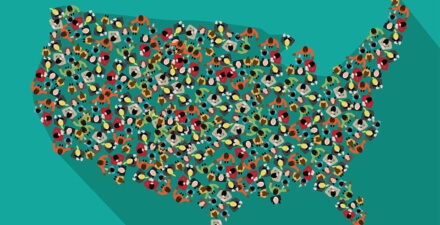Brad DeLong: Worthy reads on equitable growth, June 2-7, 2021
Worthy reads from Equitable Growth:
1. Here’s a brand-new, very interesting, and very well-done working paper by Raissa Dantas and Jacob Robbins. Read their “Covid–19 Businesses Reopenings & Consumer Spending,” in which they write: :This paper studies … Covid–19 retail and restaurant shutdowns. … We find reopening policies substantially increased the dramatic ‘V’ shaped pattern of consumer spending for categories directly impacted by the laws: a 68.4 p.p. increase in non-essential in-store spending and a 16.7 p.p. increase in full-service indoor dining. For sectors not directly impacted—essential retail, limited-service restaurants, and online—we find a limited impact of reopenings. We estimate that retail reopenings are responsible for 34% of the total trough-to-peak recovery in spending, while restaurant reopenings are responsible for 15% of the recovery.”
2. I am greatly looking forward to this forthcoming event on June 15 by Equitable Growth because it is important and it is an area in which my ignorance is great: Data Infrastructure for the 21st Century: A Focus on Racial Equity. Here’s some of the event overview: “Large … racial divides in income, wealth, employment, and other markers of economic well-being … have a tragic human cost. … Pay discrimination, barriers to wealth accumulation, and other forms of systemic racism prevent people from developing and fully deploying their human capital. The Biden administration has … an Equitable Data Working Group. Across many domains, federal data collection and reporting can be improved to better reflect the diversity of our economy. These improvements could then guide policymakers in implementing more finely tuned policies to address the legacy of systemic racism and the differential impacts of recessions and other economic shocks on communities of color. This event will convene a panel of academics to discuss some actionable areas of policy where the Biden administration could take steps to increase the quality and utility of economic data disaggregation and how these steps will lead to better policy outcomes.”
Worthy reads not from Equitable Growth:
1. Here is a very nice video talk from Markus Brunnermeier’s series over at Princeton University: “Oliver Blanchard on Rethinking Fiscal and Monetary Policy, Post-COVID.” The presentation, however, lacks explicit consideration of the end-stage of what Larry Summers started us calling “secular stagnation.” What happens when the era of a safe-asset shortage ends? How can we make it end? And should we now be attempting to do so? Kicking the government debt can down the road is indeed a very profitable and good thing to do when interest rates are at their current values. And perhaps they will stay at their current values for so long that we will look back and see debt accumulation as a very effective way of boosting societal well-being, and wish that we had done more of it. But what happens if interest rates start to normalize is still a relevant question. My view is that it will require action, but that the costs of high debt if interest rates normalize cannot be greater than moderate, if only because the situation can always be handled by financial repression, and while the costs of financial repression are positive, they are moderate. However, I would like smarter people than me thinking about this.
2. Bloomberg Opinion’s Noah Smith tries to account for popular distaste for inflation by claiming that there is an inverse correlation between inflation and real-wage growth. And there is—for supply shock-caused inflation. But for Noah, the claim is that people hate inflation, not that people hate supply shock-caused inflation, which is the kind that reduces worker well-being. But there are other kinds of inflation as well: wage-push inflation and demand-pull inflation. Wage-push inflation is definitely associated with higher real wages for the working class and thus for the overwhelming bulk of the electorate. Demand-pull inflation produces wealth for those who find themselves holding positions at bottlenecks, but also tends to boost wages because it squeezes non-bottleneck profits when the labor market gets tight. And yet the claim I see in the public discourse is that demand-pull inflation—the kind we are hoping to get over the next eighteen months—is massively unpopular as well. Why? Smith does not have an answer. Read his “Why Do People Hate Inflation?,” in which he writes: “I don’t think we should be panicking about inflation yet. But … why do we even care … in the first place? … Inflation really made people very upset from maybe around 1974 to around 1983. That roughly coincides with when inflation was actually high in America. … When you look at a graph of nominal wages, it sure looks like inflation doesn’t affect it very much. … Now look at a graph of real wages! It’s all over the place! … It sure looks like nominal wages are sticky, meaning that inflation—if it happens for the wrong reasons—can reduce workers’ wages and real purchasing power. … Why is it so hard for workers to negotiate cost-of-living raises? Why was this so hard even in the late 60s and 70s, when unions were much stronger than they are today? What is broken in our wage-setting process? If we can answer that question, we might have a chance of fixing it.”




